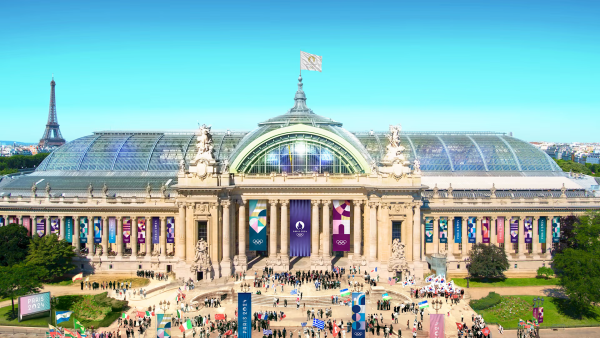Votre panier est vide
Besoin d'inspiration ?
Rendez-vous dans le programme en ligne du GrandPalais
Article -

The new Italian trends spread rapidly throughout Europe.
Artists there took these innovations on board and adapted them to their regional circumstances. Each artistic centre developed its unique style, its own Renaissance.
The kings of France were great patrons of the arts. François I (1494-1547), the most important ruler during the Renaissance, brought architects, sculptors, painters and gardeners to his court at Fontainebleau. The great Italian masters, Primaticcio and Rosso Fiorentino, decorated the château. Rosso worked on its Gallery. He installed paintings on mythological subjects surrounded by stucco sculptures (coated with whitewash, which was lighter and cheaper than marble). This movement within the French Renaissance was called the “School of Fontainebleau”.

François I also became patron to the famous painter Leonardo da Vinci (1452-1519). He gave him lodgings in his house at Clos Lucé, near his château. The artist worked there until the end of his life. This is how he came to leave the Mona Lisa as a legacy to France. Bernard Palissy was a potter. His work is a prime example of the Renaissance in France. He made brightly coloured enamelled ceramics. He was inspired by nature, and showed plants and animals on his dishes. According to one story, he burned all his furniture to increase the heat in his furnace!

Flemish artists invented oil painting and the new portable medium, canvas – it was the start of easel painting which spread through Europe. They differentiated themselves from Italian art. Flemish artists were fond of intimate interior scenes. The painters devoted themselves to painting the tiniest detail. Jean Van Eyck (c. 1390-1441), a very famous artist at that time, adopted new Italian techniques such as perspective, but kept the Flemish tradition of minute detail.

Albrecht Dürer (1471-1528) is the best known German artist of the Renaissance. He was a painter as well as an engraver. He travelled to Italy to study the works of Antiquity and the Renaissance. When he returned to Nuremberg in Germany, he passed on the new things he had learned in Italy: including humanism, perspective, and the study of anatomy. Adam and Eve shows an advanced study of anatomy and a passion for botany. In Melencolia I he gives us an allegorical representation of the artist troubled by the times, constantly questioning the world – humanist man.

The painter Hans Holbein (1497-1543) devoted himself to representing the human face. He painted portraits of courtiers, noblemen and merchants. They are faithful representations and bear social witness to the age. Look closely at the foreground of the painting The Ambassadors – there is a distorted image. If you turn your head to the side, you can make out a human skull. This is called a “vanitas”.

One artist stands out in the Netherlands, Hieronymus Bosch (c. 1450-1516). He rejected the Italian innovations. He did not want to represent reality like all his contemporaries, but instead to evoke an imaginary world full of monsters and fantastic creatures. A lot of things are happening in his paintings. He shows man’s vices and sins in a humorous way.


Votre panier est vide
Besoin d'inspiration ?
Rendez-vous dans le programme en ligne du GrandPalais
See content : 'Les métamorphoses du Grand Palais': a France 5 and france.tv documentary to watch again!

Article -
The Grand Palais is completing the biggest renovation project in its history. For the past two years, director Stefan Cornic has been tracking this metamorphosis with his camera, giving an overview of the multiple events that have taken place in the building since it was inaugurated in 1900. A documentary to watch again and again on France 5 and france.tv!
See content : From Paris 1900 to Paris 2024: the Grand Palais and its Nave, an architectural jewel restored right on time to meet sportsmen and women!

Article -
A regular venue for artistic and cultural events for over a century, the Grand Palais is reopening its majestic restored Nave for the Paris 2024 Olympic and Paralympic Games to become the place for fencing and taekwondo events! And don't forget: this is...
See content : Meanwhile, on the building site, the Grand Palais is back in full colour

Article -
A monument of stone, glass and metal, the Grand Palais blends into the urban landscape. However, on closer inspection, it is in fact bursting with colour, and one of the challenges of the restoration work currently underway is to restore all its chromatic...